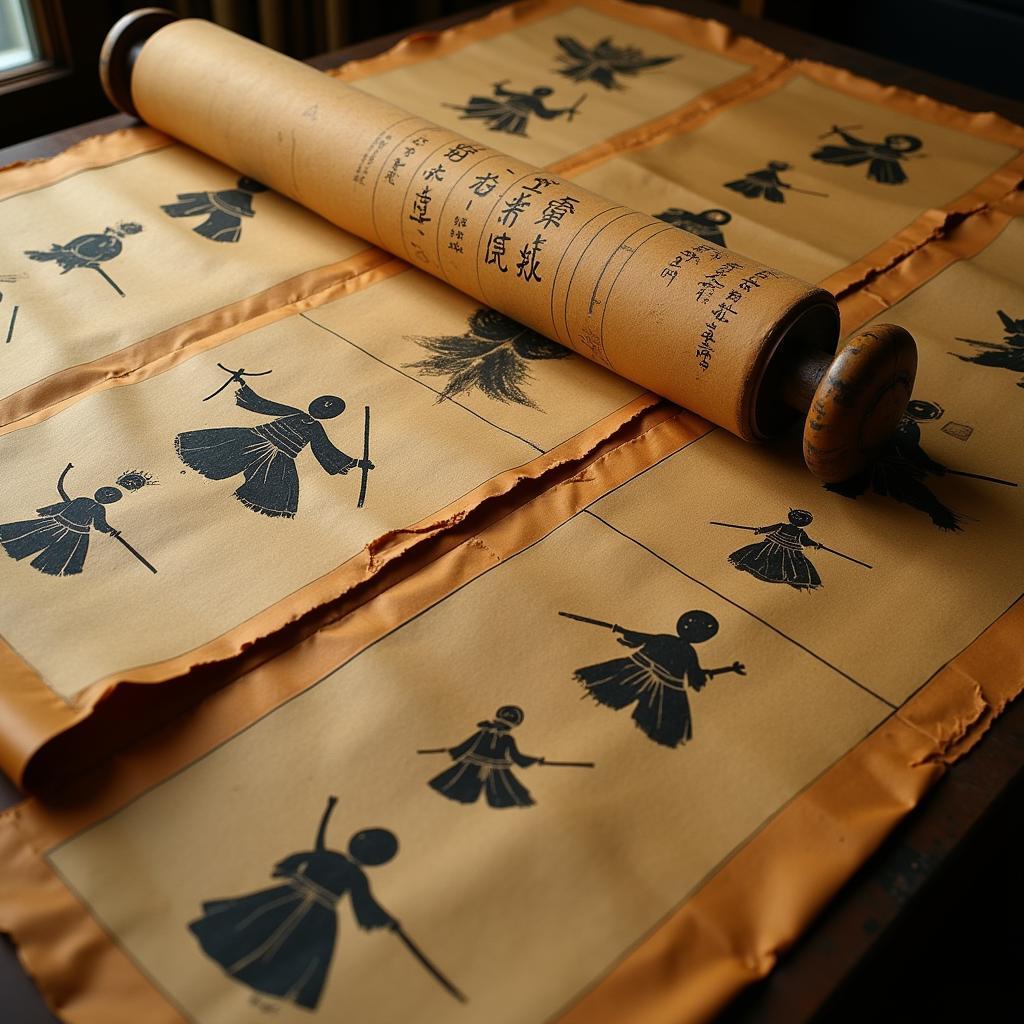The phrase “Ninjutsu Research Club” might evoke images of shadowy figures practicing secret martial arts in dimly lit rooms. While the allure of the ninja’s mystique remains, a modern ninjutsu research club is less about espionage and more about the historical, cultural, and philosophical underpinnings of this ancient Japanese art.
Delving into History: More Than Meets the Eye
Contrary to popular belief, ninjutsu wasn’t simply about stealth and assassination. It was a complex system of unconventional warfare and espionage employed by the shinobi, individuals trained in infiltration, sabotage, and reconnaissance. Their skills were invaluable during Japan’s feudal period, a time rife with political intrigue and power struggles.
 Ancient Japanese scrolls depicting ninja training and tactics
Ancient Japanese scrolls depicting ninja training and tactics
Unveiling the Secrets: What Does a Ninjutsu Research Club Do?
A typical ninjutsu research club delves beyond the romanticized Hollywood portrayal, exploring:
- Historical Context: Members analyze historical texts, scrolls, and artifacts to separate fact from fiction and understand the socio-political landscape that birthed the ninja.
- Practical Skills: While not all clubs engage in physical training, some explore the practical aspects of ninjutsu, including stealth movement, camouflage, and traditional weaponry.
- Philosophical Teachings: Ninjutsu encompassed a strict ethical code and spiritual beliefs. Clubs often discuss these philosophies, emphasizing self-discipline, perseverance, and adaptability.
Separating Fact from Fiction: Debunking Common Myths
Ninjutsu has been romanticized and often misrepresented. Research clubs aim to dispel these myths by:
- Addressing the Superhuman Myth: Ninjas were not superhuman; their skills stemmed from rigorous training and deep understanding of human psychology and the environment.
- Challenging the “All Black” Stereotype: While black attire provided camouflage, ninjas were pragmatic and adapted their clothing based on their mission and environment.
- Highlighting the Importance of Strategy: Ninjutsu emphasized strategy and cunning. Brute force was a last resort, with deception and intelligence gathering being paramount.
Joining the Quest: Finding a Ninjutsu Research Club
Interested in uncovering the mysteries of the ninja? Here’s where your journey begins:
- University Clubs: Many universities with East Asian studies departments or martial arts programs host ninjutsu research clubs.
- Online Forums and Groups: Connect with enthusiasts and researchers online to exchange information and find clubs in your area.
- Martial Arts Schools: Some traditional martial arts schools offer specialized ninjutsu training programs that may include a research component.
The Legacy Continues: Ninjutsu in the Modern World
While the days of feudal Japan are long gone, the principles of ninjutsu remain relevant. The adaptability, resourcefulness, and strategic thinking embodied by the ninja offer valuable lessons applicable to various aspects of modern life, from personal development to professional endeavors.
Joining a ninjutsu research club is an opportunity to separate myth from reality, engage in intellectual exploration, and gain a deeper appreciation for this ancient art form and its enduring legacy.